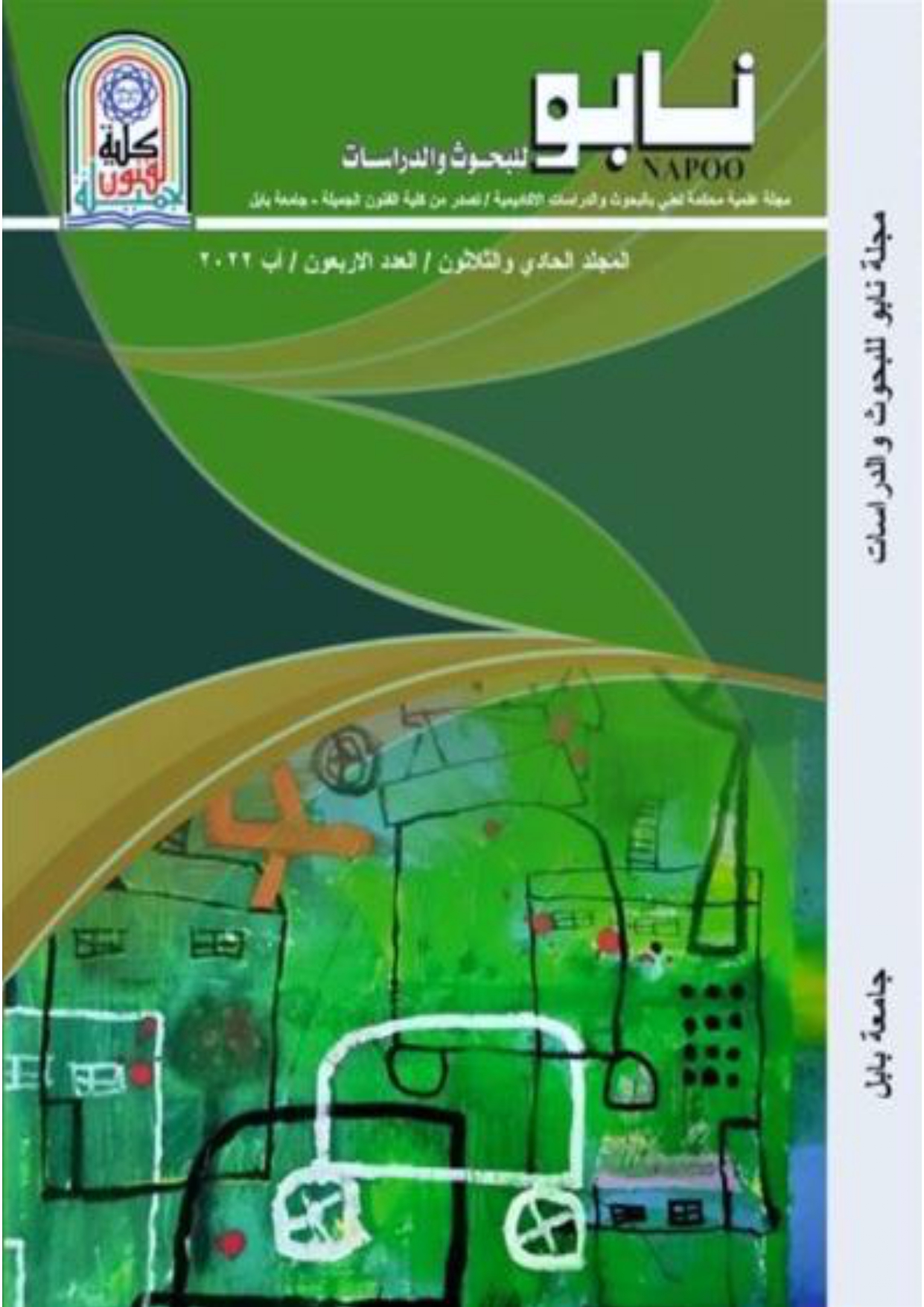Fear in the paintings of Alaa Bashir
Keywords:
fear, paintingsAbstract
Research Summary
This research is concerned with studying (Fear in the Products of Alaa Bashir), and it is located in four chapters, the first chapter / methodological framework of which is devoted to clarifying the problem of the research, its importance and the need for it, and the goal of the research, which was limited to recognizing fear in the products of Alaa Bashir, within the time period between (1995 - 2009) drawings And planning and sculptures, and the chapter ended with defining the search terms. As for the second chapter/theoretical framework, it included three sections about me, the first of which dealt with the concept of fear in psychological studies, and the second topic dealt with fear in historical Iraqi plastic art, while the third topic dealt with the characteristics and artistic visions of the Iraqi artist Alaa Bashir, and the second chapter ended with the indicators of the theoretical framework and previous studies, as it included the most important things that the theoretical framework brought in terms of indicators and concepts. (Content Analysis), which was chosen in an intentional way with (4) models. The researcher adopted indicators that resulted from the theoretical framework of the research as a tool for analyzing the artist’s completed works, which resulted in the results and conclusions of the research. She answered the goal of the research and presented the recommendations and suggestions in the fourth chapter of the research and summarized as follows:
1- The emergence of fear of the unknown and metaphysics in the products of the Iraqi artist (Alaa Bashir), as well as the fear of inevitable death through his adoption of drawing the shape of the crow always in his artworks as a symbol of death, as well as by drawing the artist himself fleeing towards the lower left corner of the artwork to indicate For the eternal eternity of the tragedy of conflict. And also the use of blocks in drawing the mass of the sky and the mass of the earth the underworld, and the use of dark, dark, gloomy colors at the bottom of the work, which is the dominant and dominant color in his artwork and on the contrary, he puts the color of light at the top of the work, as well as through his drawing of a desert, remote and lonely land in strange, dreamy and lonely places, as The fleeing person's face is pale, weak, and frightened. He looks back and not forward with a turbulent movement in a constant look at the crow who is always watching him. As we note in a sample (1) of the research sample.
2- The emergence of fear from the other human being from the human race and from the society in which the artist lives from displaying the image of a naked woman stripped of all things and rights involved in herself as if she is in a child in her mother’s lap for fear of the other and his traditions, authority, injustice, cruelty and his destruction of the human self, as well as the artist used The picture of the room is the narrow place defined by walls from all sides, as if it were a prison for a person and his freedom. As in model (3( .
Conclusions:
1- The artist Alaa Bashir relies heavily on his imagination and his psychological state and the visions and images of his subconscious psychological interior, in which there are many sediments of the buried past, but rather, there are old images sunken in the ancient past of ancient human visions.
2 - Images of fear often live in the artist’s visions and imagination, and most of them carry fears, fear of many things, especially from the idea of death, which is completely dominated by the point of obsession and terror from the idea of the end, especially since it has many creative and distinctive advantages on the technical, scientific, cultural and cognitive levels, Therefore, he fears for himself a lot, which is a very normal characteristic of creative people who know the value of their creative selves and its difference with the rest of mankind.




